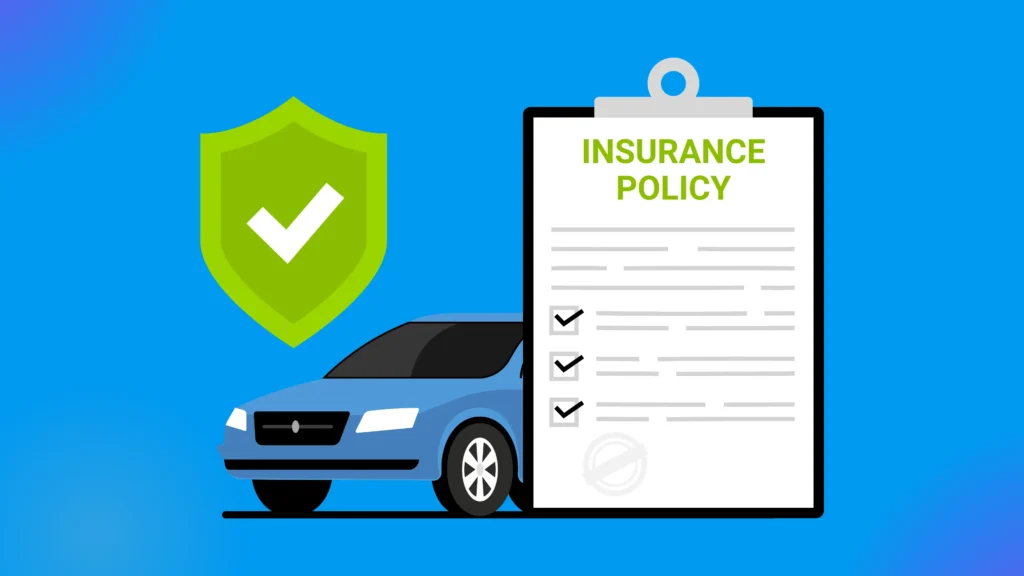In today’s article, we are going to know about How To Buy or renew bumper-to-bumper (with zero depreciation cover) car insurance.
What is Bumper-to-Bumper Car Insurance?
Bumper-to-bumper car insurance, also known as comprehensive car insurance or all-inclusive car insurance, is a type of car insurance policy that provides coverage for a wide range of potential damages to a vehicle. These policies typically cover damages that occur as a result of accidents, vandalism, theft, and other unexpected events. Bumper-to-bumper car insurance policies are designed to provide comprehensive coverage for a vehicle and may include coverage for damages to the exterior, interior, and engine of a car.
Bumper-to-bumper car insurance policies may also include additional coverage options, such as personal injury protection, roadside assistance, and rental car reimbursement. These additional coverage options can be helpful for drivers who may need assistance in the event of an accident or other unforeseen event.
It’s important to note that bumper-to-bumper car insurance policies may not cover every type of damage that can occur to a car. Some exclusions may include damage from normal wear and tear, mechanical failures, and damages resulting from intentional acts. It’s always a good idea to carefully review the terms and conditions of a bumper-to-bumper car insurance policy before purchasing to ensure that you understand what is and is not covered.
Pros and Cons of Bumper-to-Bumper Car Insurance
Pros of bumper-to-bumper car insurance:
- Comprehensive coverage: Bumper-to-bumper car insurance provides a wide range of coverage for damages to your vehicle. It can help protect you financially in the event of an accident, vandalism, theft, or other unexpected events.
- Additional coverage options: Bumper-to-bumper car insurance policies may include additional coverage options, such as personal injury protection, roadside assistance, and rental car reimbursement. These additional coverage options can provide additional peace of mind and financial protection.
- Peace of mind: Knowing that you have comprehensive coverage can provide peace of mind while driving and can help you feel more secure in the event of an unexpected event.
Cons of bumper-to-bumper car insurance:
- Higher premiums: Bumper-to-bumper car insurance policies typically have higher premiums compared to other types of car insurance.
- Exclusions: While bumper-to-bumper car insurance provides comprehensive coverage, it may not cover every type of damage that can occur to a car. Some exclusions may include damage from normal wear and tear, mechanical failures, and damages resulting from intentional acts.
- Limited coverage: Bumper-to-bumper car insurance policies only cover damages to your own vehicle. They do not provide liability coverage for damages or injuries that you may cause to another person or their property while operating your vehicle.
It’s important to carefully consider the pros and cons of bumper-to-bumper car insurance before purchasing a policy. It’s always a good idea to review the terms and conditions of a car insurance policy to ensure that you understand what is and is not covered
What is Covered Under Bumper-to-Bumper Car Insurance?
Bumper-to-bumper car insurance, also known as comprehensive car insurance or all-inclusive car insurance, is a type of car insurance policy that provides coverage for a wide range of potential damages to a vehicle. These policies typically cover damages that occur as a result of accidents, vandalism, theft, and other unexpected events.
Bumper-to-bumper car insurance policies may cover damages to the exterior, interior, and engine of a car. This can include damages to the body of the car, such as dents, scratches, and broken windows, as well as damages to the interior, such as torn upholstery and damaged dashboard. Bumper-to-bumper car insurance may also cover damages to the engine and other mechanical components of the car.
In addition to damages to the car itself, bumper-to-bumper car insurance policies may also include coverage for additional expenses, such as rental car reimbursement, towing, and roadside assistance. Some policies may also include personal injury protection, which covers medical expenses and lost wages resulting from injuries sustained in a car accident.
It’s important to note that bumper-to-bumper car insurance policies may not cover every type of damage that can occur to a car. Some exclusions may include damage from normal wear and tear, mechanical failures, and damages resulting from intentional acts. It’s always a good idea to carefully review the terms and conditions of a bumper-to-bumper car insurance policy before purchasing to ensure that you understand what is and is not covered.
How to Get the Best Rates on Bumper-to-Bumper Car Insurance
There are a few steps you can take to help get the best rates on bumper-to-bumper car insurance:
- Shop around: It’s a good idea to get quotes from multiple insurance companies to compare rates. This can help you find the best rate for the coverage you need.
- Consider a higher deductible: Choosing a higher deductible can help lower your premium but be sure to choose a deductible that you can afford to pay in the event of a claim.
- Maintain a good driving record: Insurance companies often offer lower rates to drivers with a clean driving record. Avoiding accidents, traffic violations, and other driving infractions can help you qualify for lower rates.
- Bundle your insurance: Many insurance companies offer discounts if you have multiple policies with them, such as car insurance, home insurance, and life insurance. Bundling your insurance can help you save on your premiums.
- Consider your car: The make, model, and age of your car can affect your insurance rates. Insuring a newer, more expensive car may result in higher premiums.
- Take advantage of discounts: Many insurance companies offer discounts for things like having multiple cars, being a good student, taking a defensive driving course, and more. Be sure to ask about any available discounts when shopping for insurance.
By taking these steps, you can help ensure that you get the best rates on bumper-to-bumper car insurance. It’s always a good idea to compare quotes from multiple insurance companies and review the terms and conditions of any policy before purchasing to ensure that you are getting the protection you require at a cost that is within your means.
Alternatives of Bumper-to-Bumper Car Insurance
There are several alternatives to bumper-to-bumper car insurance, also known as comprehensive coverage, that you may want to consider when insuring your vehicle:
- Liability insurance: This type of insurance covers damages or injuries that you may cause to another person or their property while driving.
- Collision coverage: This type of insurance covers damages to your vehicle as a result of a collision with another vehicle or object. It does not cover damages caused by non-collision events, such as theft or natural disasters.
- Personal injury protection (PIP): This type of insurance provides coverage for medical expenses, lost wages, and other related expenses for you and your passengers in the event of an accident, regardless of who was at fault.
- GAP insurance: This type of insurance covers the difference between the amount you owe on your car loan and the actual value of your vehicle if it is totaled in an accident.
It’s important to carefully review the terms and conditions of different types of car insurance and choose the coverage that best meets your needs. You may also want to shop around and compare quotes from multiple insurers to find the best coverage at the most affordable price.
conclusion
In conclusion, bumper-to-bumper car insurance, also known as comprehensive car insurance or all-inclusive car insurance, is a type of car insurance policy that provides coverage for a wide range of potential damages to a vehicle. These policies typically cover damages that occur as a result of accidents, vandalism, theft, and other unexpected events. Bumper-to-bumper car insurance policies may include coverage for damages to the exterior, interior, and engine of a car, as well as additional coverage options such as personal injury protection, roadside assistance, and rental car reimbursement.
While bumper-to-bumper car insurance provides comprehensive coverage, it may not cover every type of damage that can occur to a car. Some exclusions may include damage from normal wear and tear, mechanical failures, and damages resulting from intentional acts. It’s always a good idea to carefully review the terms and conditions of a bumper-to-bumper car insurance policy before purchasing to ensure that you understand what is and is not covered.
There are several alternatives to bumper-to-bumper car insurance, such as liability insurance, collision insurance, and third-party insurance, which may be more suitable for your needs depending on your situation. It’s important to carefully consider your needs when choosing car insurance and to review the terms and conditions of any policy before purchasing to ensure that you have the coverage you need.


